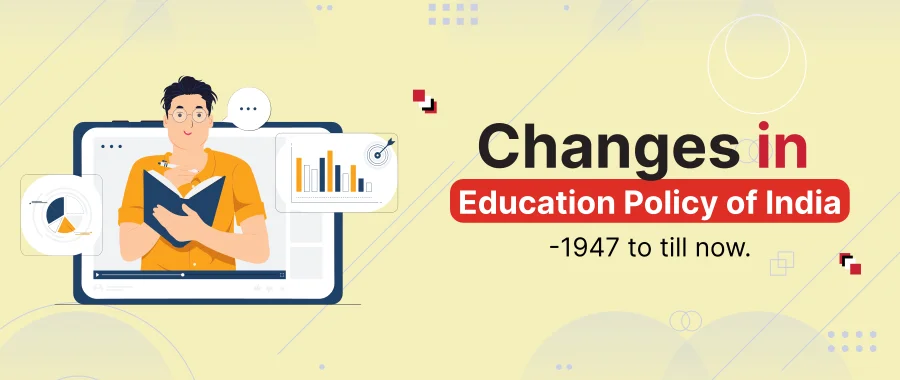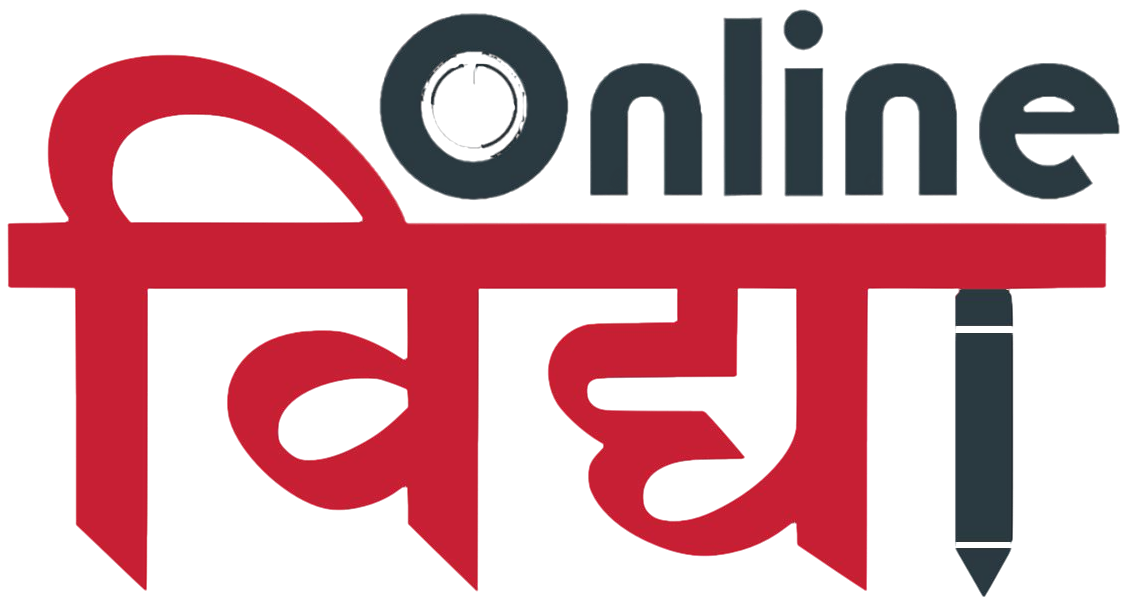Specializations
Courses Available
Courses

Changes in Education Policy of India- from 1947 till now
Changes in Education Policy of India- from 1947 till now,Dec 11, 2023
Education Policy
Dec 11, 2023
6191 Views
- Share:
The National Education Policy is a framework implemented by the Government of India to oversee and enhance education, ensuring the delivery of quality education to students.
Historical Background
The roots of the Indian education system trace back to the 5th century when individuals in India and scholars worldwide sought knowledge in esteemed institutions like Takshila and Nalanda Universities. In the traditional approach, students were sent to gurukuls, immersing themselves in the profound teachings of revered gurus. Unfortunately, this educational avenue was restricted to the privileged, creating a societal disparity in access to learning.
The dynamics changed during the British Rule in India, marked by the introduction of pivotal acts and commissions such as Macaulay’s Minute, the Hunter Commission, and the Indian Universities Act, etc. These initiatives aimed to reform the education system, introducing Western methodologies and the English language in Indian society. Consequently, educational intelligentsia emerged in regions like Madras, Bombay, and Bengal and people started to understand the importance of education among citizens of the country. The transformative journey was propelled further by visionaries like Vivekananda, Dayanand Saraswati, Jyotiba Phule, and other revolutionaries who contributed significantly to enlightening the masses about their rights and the paramount importance of education. As knowledge proliferated, people began to grasp their rights, fostering unity in their pursuit of freedom from the British Empire.
Also Read: What is UGC and How it is important for universities in India?
Post Independence
The post-independence era of India in 1947 ushered in a crucial phase of national self-discovery, during which the government confronted the stark reality of a significantly high illiteracy rate. Recognizing education as the linchpin for sustainable growth and development, the government embarked on a transformative mission to educate its populace, empowering them to contribute meaningfully across diverse fields.
Understanding the pivotal role of education in shaping the destiny of a nation, the framers of the Indian constitution meticulously embedded provisions and articles dedicated to the cause of education. With a resolute commitment to promoting education, the government of India devised comprehensive strategies, giving rise to landmark initiatives such as the University Education Commission (1948–1949), the Secondary Education Commission (1952–1953), and the establishment of the National Council of Educational Research and Training (NCERT) in 1961. These endeavors aimed not only to elevate the educational standards but also to foster a culture of learning and innovation. The 1960s witnessed a significant leap with the establishment of premier institutions like the Indian Institutes of Technology (IITs) and the Indian Institutes of Management (IIMs). This visionary step by the government aimed to ensure that the highest echelons of education were accessible to students, laying the foundation for excellence in various disciplines. Beyond academic prowess, the government also aspired for secularism, using education as a unifying force to bind the diverse fabric of the nation.
This transformative vision found continuity in the government led by the second Prime Minister of India, Indira Gandhi. In 1968, building upon the recommendations of the Kothari Commission, a landmark amendment was introduced to the Education Policy. This amendment heralded a paradigm shift by incorporating a three-language system, imparting education in English, Hindi, and regional languages. The Sanskrit language gained prominence on a larger scale, preserving India's rich cultural heritage. The government's agenda extended beyond linguistic diversity, aiming for modernization and fostering a sense of unity among the people. In 1976, during Indira Gandhi's tenure, fundamental duties related to education were introduced, underscoring the development of scientific temper and the provision of educational opportunities for children aged six to fourteen. Over time, these duties evolved into an act in 2002, solidifying the government's commitment to nurturing a well-rounded, intellectually empowered citizenry.
The educational journey continued to evolve in 1986 under the leadership of Prime Minister Rajiv Gandhi, with a focus on primary-level education and the integration of Gandhian principles into the education system. The government aimed to bridge societal disparities and enhance educational accessibility for marginalized communities. Initiatives like the Sarva Shiksha Abhiyan, the Mid-Day Meal Scheme, and the establishment of institutions like Navodaya Vidyalaya Samiti and Kendriya Vidyalaya Samiti were instrumental in facilitating quality education for the underprivileged. This amendment also marked the advent of distance learning, introducing open universities like the Indira Gandhi National Open University (IGNOU) in 1985. Subsequent years witnessed the introduction of minor yet impactful changes, such as the Right to Education Act of 2009, the 86th constitutional amendment of 2002, and initiatives like Beti Padhao Beti Bachao Yojana.
National Education Policy, 2020
The biggest amendment made in the last few years is the introduction of the new Education Policy of 2020 under the government of India headed by the current prime minister of India, Narendra Modi. The aim of the National Education Policy, 2020 was to shift its focus from imparting only theoretical knowledge to introducing practical learning in the curriculum.
Some of the key features of the new Education policy of 2020 are as follows -
- Departing from a purely theoretical approach, the policy prioritizes practical learning through a 5-3-3-4 curriculum framework, discarding the previous 10+2 structure.
- Introduction of vocational training as early as class 6, emphasizing skill development at the primary level.
- Provision of multiple entry and exit points, granting students the flexibility to alter their educational trajectories seamlessly.
- The policy underscores the significance of practical, hands-on learning, steering away from conventional book-based education.
- Notable emphasis is placed on using the mother tongue at the primary level, enhancing students' comprehension and connection to the learning process.
- Replacement of the Ministry of Human Resource Development (MHRD) with the Ministry of Education.
A robust education policy is paramount in shaping a nation's trajectory. The National Education Policy of 2020, with its emphasis on practical learning and accessibility, holds the potential to propel India to unprecedented heights, possibly even surpassing developed nations.
Conclusion
In essence, India's educational trajectory represents a relentless pursuit of excellence, equity, and inclusivity. From the early post-independence efforts to the comprehensive amendments and policy introductions over the years, the Indian government's commitment to education has remained steadfast, reflecting a deep understanding of its transformative power in shaping the nation's destiny. Each milestone serves as a testament to India's dedication to creating a knowledge-driven society and fostering an environment where every citizen has the opportunity to thrive.
Also Read: What are the Approvals for Universities in India?

Meet Our Counselling Experts
Get 100% Free Career Counseling




PlacementPartners










Schedule Your 30 min Couselling Session With Today!!
Select a Date of your choice :
You Have Selected Slot on .

